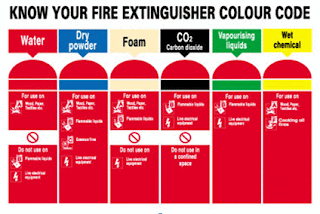Internal, in the studio etc
During our first week at college we were taken into the photographic studio and given a health and safety talk by our tutor Steve Davis who outlined the dangers that are present in the studio
There are a certain amount of health and safety considerations to take in to account when using a photographic studio. Most of the work will take place in a darkened room so there are a number of dangers lurking for the unsuspecting photographer
Most of my photography has included using most of the equipment highlighted below and safety precautions were adhered to
1-Trip Hazards
here are various trip hazards in and around the studio,these include:
2-Tripods and lighting stands:
These are very easy to trip over and which cannot be seen easily in a darkened room. Some have long booms with large counter weights on their ends. Be careful not to bang you heads and be weary of low positioned lighting heads
3-Trailing power cables, leads and extension blocks: Again easy to trip over and carrying very high voltages.Tape cables to the floor where possible with warning or hazard tape
4-High voltage Flash and lighting heads: These units which produce the lighting in the studio can become extremely hot due to there high power outputs. The side casings of these units can become very hot, handle them with care. Do not hang or drape coats, shirts etc over lighting/flash heads. This could overheat the lighting and produce a fire risk
5-Strobe lighting and flash: Be sure to warn people accompanying you into the studio that there may be a risk that the flashing lighting in the studio may trigger of epileptic fits
6-Water and liquids: Be extremely careful if using liquids and water within a photographic studio. Liquids and high voltage electricity don't mix. Always use dry hands when using any electrical equipment within the studio
7-Fire extinguishers: Make sure you know the location of the fire extinguishers within the room. Make sue you know the right kind of extinguisher to use on a fire. There are different extinguishers for different kinds of fires
Shown below are the different types of fire extinguisher, we would use the dry powder extinguisher in our studio here at college as this is the correct extinguisher to put out an electrical fire. Using the wrong extinguisher on an electrical fire could result in an electric shock
O2 fire extinguishers (carbon dioxide) are the only fire extinguisher recommended for fires involving electrical equipment. CO2 is safe to use on and around electrical equipment, as the gas itself is non-conductive, and once used, there is no sticky foam or messy powder left behind. They are also effective on Class B fires (flammable liquids).
Carbon dioxide fire extinguishers are painted bright red with a black panel above the operating instructions. They have a distinctive horn-shaped nozzle at the side on the smaller models with 5kgs and above having a hose and horn.
The links below show some basic health and safety procedures for studio photography:
http://www.ehow.com/video_2371507_photography-studio-equipment-studio-safety.html
(Externally) out and about on location etc
A lot of my location photography is taken outdoors and I normally consider all of the health and safety implications which are highlighted below
1- Maintaining all equipment in good working order ready for use
2- Dependent on what you are shooting and what location,use adequate safety clothing such as high visibility vests, hard hats, and safety boots to suit your location
Beware of slippery surfaces and wet floors on location. Wear the correct footware for the job in hand
3- Being aware of the surroundings on location, careful consideration must be given to positioning of any lighting stands,lighting heads,trailing leads or other equipment that may be a danger to the public
4- Tape down leads to avoid trip hazards
5- Use stickers on lighting units and other dangerous equipment warning the general public of the dangers. Some examples would be.....
"Warning!! Do not touch! Extremely hot surfaces".
"Warning!! Do not touch! Danger off electric shock"
6- Warn the general public there are flashing lights in the vacinity
Health and Safety guide from my local photography club
In the darkroom
Control of Substances Hazardous to Health
Photographers have to be aware of the environmental and health issues in Photography. Not so much now but many of the chemicals that are/were used in Photography can be and are damaging to your health.
The 1974 Health and Safety at Work etc. Act needs to be referred too. Employees and public must take reasonable care. Risk assessments should be made for all activities, including fire precautions, using display equipment, manual handling and control of substances/chemicals COSHH, either in the studio or out on location.
Below is a link to the governments heath and safty guidlines on COSHH
http://www.hse.gov.uk/coshh/industry.htm
The 1974 Health and Safety at Work etc. Act needs to be referred too. Employees and public must take reasonable care. Risk assessments should be made for all activities, including fire precautions, using display equipment, manual handling and control of substances/chemicals COSHH, either in the studio or out on location.
Below is a link to the governments heath and safty guidlines on COSHH
http://www.hse.gov.uk/coshh/industry.htm



This is the best post on this topic i have ever read.I am really very impressed with it. Keep blogging.
ReplyDeleteLas Vegas Fire Protection